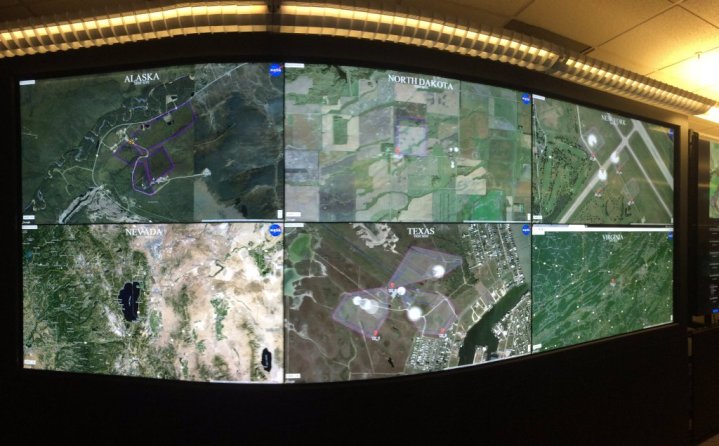
As part of the testing, drone operators at each site simultaneously flew a variety of remote-controlled unmanned aircraft systems. The test sites are dispersed across the country and included locations in Alaska, North Dakota, Nevada, New York, Virginia, and Maryland. At one point, a whopping 24 drones took to the air at the same time during this early stage of testing.
Success! 24 #drones in the air for a great test of the UTM research platform! https://t.co/bpxHbOuKmi #nasaaero pic.twitter.com/RjrALUpY3U
— NASA Ames (@NASAAmes) April 19, 2016
To hit that number, each test site flew up to four drones at a time while interacting with the UTM system during all stages of the flight. Before flying, each drone operator entered a flight plan into the UTM system, which checked the proposed path for potential conflicts and either approved or rejected the flight. Operators were notified of their approval status before their scheduled flight time. Once in the air, the drone’s flight pattern was tracked by the UTM both on a local and a national level — leading to the amazing image atop this article. Not only were the flights tracked at each FAA test site, each drone also was monitored remotely by engineers working at NASA’s Ames Research Center in Moffett Field, California.
These tests were a milestone for the system — it’s the first time the UTM research platform was tested at all six FAA sites at the same time. It was the largest live test with 24 simultaneous live flights and the first time both live and simulated flights have been processed by the platform. It was also the first time controllers at each location tested the NASA-developed UTM displays and apps on a live flight. NASA hopes to use information gathered from these tests to refine the system so it can track different types of unmanned aircraft and a greater number of them flying in geographically diverse locations.
Updated on 04-21-2016 by Jeremy Kaplan: Corrected the headline to show that the FAA is not involved in testing, but has agreed to allow NASA to use its test sites, and to reflect successful completion of the test.



